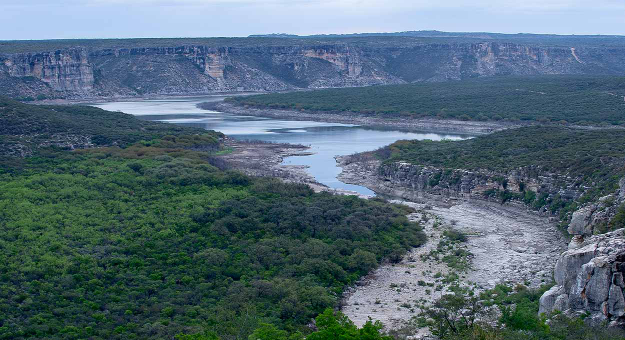In 50 years, Texas’ population is expected to grow by 70%. That’s 20 million more Texans who will need water in a state that has repeatedly faced drought-induced water shortages and will likely suffer more intense droughts in the future.
As the population grows, groundwater will continue to play a critical role in supporting Texas’ ecology and economy. Today groundwater provides approximately 60% of the 16.1 million acre-feet of water used in the state annually and an estimated 30% of the flows in rivers, streams and springs across the state.
Recent years have seen a rising intensity of debate and concern around the current condition and future of groundwater in Texas. Beneath the Surface, a new EDF report, provides a comprehensive overview of five key groundwater management challenges in Texas. It also identifies opportunities for the state to move toward more sustainable groundwater management, ensuring that communities, farmers, ranchers and the natural systems that depend on this vital resource continue to thrive.

The Devils River is one example in Texas where groundwater pumping has affected the flow of surface water, highlighting the need for more funding to build a better understanding of the connections between these two types of water supplies. (Photo credit: Texas Parks and Wildlife).
Challenge 1: Groundwater is a privately owned, yet shared, resource.
In the 2012 case Edwards Aquifer Authority v. Day, the Texas Supreme Court stated that, like oil and gas rules, one purpose of groundwater regulation is to afford a landowner his fair share of groundwater beneath his property. But the court also stated landowners are subject to reasonable regulation by groundwater conservation districts (GCDs). This case has raised questions about what is “fair share” and “reasonable regulation” and to what extent a groundwater district can limit groundwater pumping to maintain aquifer levels.
Challenge 2: A patchwork framework based on local control complicates management.
Critics argue that small, county-based GCDs are ineffective because they manage groundwater based on a local political context rather than a hydrogeological one. Proponents of local groundwater management, on the other hand, argue that local control ensures community representation of values and concerns and recognition of unique local hydrogeologic conditions.
Challenge 3: State law treats groundwater and surface water separately, although they are connected.
In Texas, surface water is owned by the state, and groundwater is privately owned by the overlying landowner. Consequently, distinct water allocation and management systems govern groundwater and surface water in Texas. This separation increases the risk of groundwater pumping reducing flows in creeks and rivers and of harming surface water rights holders downstream.
Challenge 4: The law leans toward maximizing groundwater withdrawals.
No legal mandates require GCDs to sustainably manage groundwater; consequently, groundwater levels across Texas are declining. In setting their long-term management goals, GCDs are faced with the difficult task of providing “a balance between the highest practicable level of groundwater production and the conservation, preservation, protection, recharging, and prevention of waste of groundwater,” as described in the Texas Water Code. The considerations slant toward pumping groundwater in the near term versus conservation and preservation of aquifer levels in the long term. This is, in part, because GCDs lack the data, modeling and economic analyses needed to understand what volume of water can be sustainably pumped from aquifers in perpetuity without negative impacts. Five opportunities for Texas to move toward more sustainable and resilient groundwater management. Share on X
Challenge 5: Texas lacks a framework to facilitate development of market-based solutions.
Increased population growth in Texas, predominantly in cities, is placing pressure on dwindling surface water supplies. Texas does not have widespread groundwater markets, but some utilities and cities are turning to importing groundwater from rural areas of Texas for additional water supplies. This pits rural interests against urban and potentially threatens the economies, property rights and ecology of rural areas.
Solutions from the Legislature
The Legislature can assist GCDs by providing additional funding for modeling and data to support more informed decisions by districts and to build a better understanding of the connections between surface water and groundwater. Funding is also needed to support more coordination and joint planning among districts whose boundaries cover a single aquifer.
In addition, the Legislature should require the Texas Water Development Board to model the sustainable yield of aquifers for GCDs to use when they are adopting management targets.
These steps toward more sustainable groundwater management would go a long way to ensuring Texas’ economy, natural resources and livelihoods will continue to thrive as our population increases and droughts intensify in years to come.









